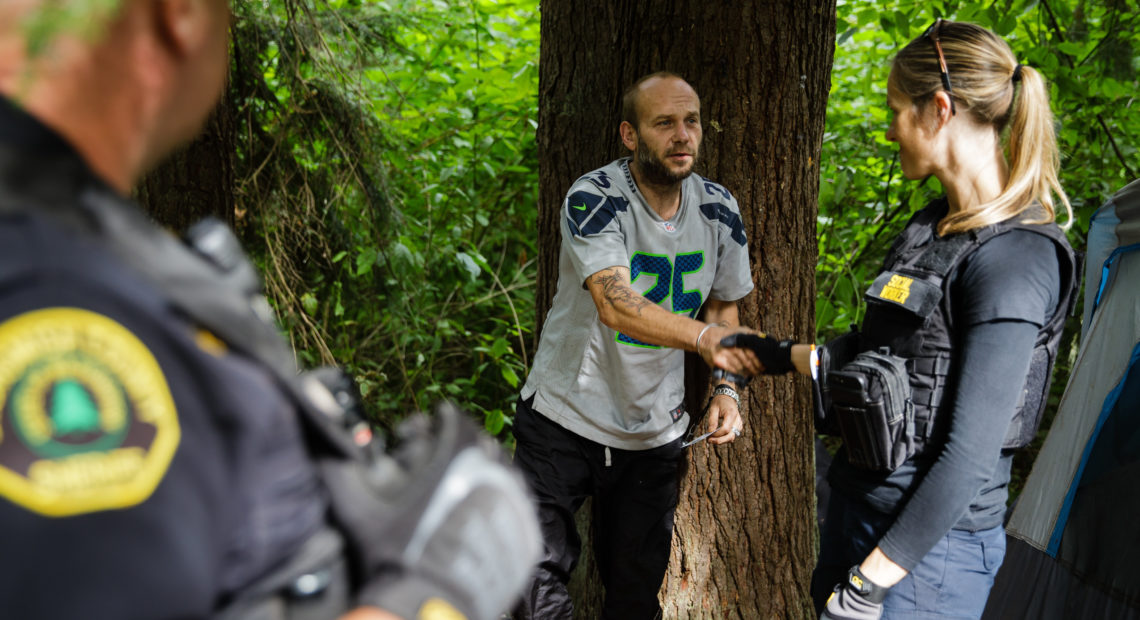
Washington’s Snohomish County Is Treating Opioid Addiction Like A Natural Disaster
Listen
When he was police chief of Stanwood, Wash., population 7,000, Ty Trenary thought rural communities like his were immune from the opioid crisis.
Then, one day, a mother walked through his door and said, “Chief, you have a heroin problem in your community.”
“And I remember thinking, ‘Well that’s not possible,’ ” Trenary recalls. “This is Stanwood and heroin is in big cities with homeless populations. It’s not in rural America.”
But heroin addiction and abuse are not just a big city problem, as Trenary had thought. While the bulk of fatal overdoses still happen in urban areas, the rural overdose rate has increased to slightly surpass that of cities.
Rural Americans say drug addiction and abuse are the most urgent health problems facing their local community, according to a new poll by NPR, the Robert Wood Johnson Foundation and the Harvard T.H. Chan School of Public Health. In the poll, 48 percent of people said opioid addiction has gotten worse in their community in the past five years.
Trenary now agrees. A few years ago, he was elected sheriff of Snohomish County and got a rude awakening. He toured the jail and found it had become a de facto detox center, full of “very, very sick, very, very sick people,” he says.

Snohomish County Sheriff Ty Trenary. He wasn’t aware of the extent of the opioid epidemic in his county until he became sheriff and realized the jail had become a defacto detox center. CREDIT: Leah Nash for Finding Fixes Podcast
“Detoxing from heroin is like having the worst possible stomach virus you can have. People are proned out, just suffering.”
At any given time, around half the inmates were withdrawing from heroin, making for a dangerous and expensive situation.
“It took becoming the sheriff to see the impacts inside the jail with heroin abuse, to see the impacts in the community across the entire county for me to realize that we had to change a lot about what we were doing,” Trenary says.
A Disaster Response Approach
So they did. Snohomish County in Western Washington is taking a unique approach to tackle the problem.
Last year leaders declared the opioid epidemic a life-threatening emergency. The county is now responding to the drug crisis as if it were a natural disaster, the same way they’d mobilize to respond to a landslide or flu pandemic.
Snohomish County is the first county in the country to treat it this way.
The idea grew out of their experience with another tremendous disaster in the county: the massive 2014 landslide in Oso, Wash., which killed 43 people.
Back then, the director of communications for the Sheriff’s office, Shari Ireton, took reporters to see the landslide, and she ended up learning something too.
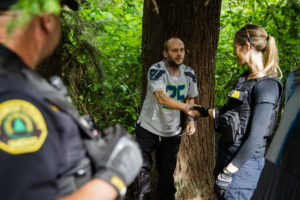
Social worker Lauren Rainbow (right) meets a man illegally camped in the woods in Snohomish County. They are part of a new program in the county that helps people with addiction, instead of arresting them.
CREDIT: Leah Nash for Finding Fixes Podcast
“It was amazing to see Black Hawk helicopters flying with our helicopter and a fixed wing over the top of that,” she says. “All in coordination with each other, all with the same objective, which is life safety.”
Ireton thought, what if they used that same coordinated system, of everyone working together across government agencies, to tackle the opioid epidemic?
County leaders took the idea and ran with it.
Now, the response to the opioid epidemic is run out of a special emergency operations center, a lot like during the Oso landslide, where representatives from across local government meet every two weeks, including people in charge of everything from firetrucks to the dump.
The technical name for this group is the Multi-Agency Coordination group, or MAC group. It comes straight out of FEMA’s emergency response playbook.
They talk through PowerPoint slides and rattle off numbers like 7.5 and 6.1, which refer to items on their to-do list. Seven big, over-arching goals, which include reducing opioid misuse and reducing damage to the community, are broken down into manageable steps, like distributing needle clean-up kits, and a project to train school teachers to recognize trauma and addiction.
This to-do list is over one hundred items long.
“Some of these goals are really long term,” Ireton says. “I mean they’re going to take years, decades.”
The key is to be realistic, says Ireton, who is also the spokesperson for this group. You are never going to be successful if your goal is just “end the opioid epidemic,” she says.
“By breaking it down, it’s like eating an elephant. You just can eat one piece at a time. Breaking it down into a piece that you can actually digest.” Ireton says.
The county’s program includes small steps, like making transportation easier for people in drug treatment. They train family members and others in the community on steps to reverse overdoses with medicine, and they send teams of police officers and social workers to help addicted homeless people.
In Marysville, Wash., the woods are full of homeless encampments surrounded by piles of spent syringes and trash. On a recent visit, rain drips through a cedar forest next to a strip mall. Officer Mike Buell is visiting the camp along with social worker Lauren Rainbow. Buell cracks jokes with some illegal campers and introduces himself using his first name.
Buell’s job isn’t to arrest the campers, but help them get drug treatment and housing. He crouches next to the opening of one tent and explains he and his colleagues will help the campers with food, coffee and transportation to and from appointments.
“We’re basically your Uber,” Buell says.
The new approach is paying off. The teams have helped hundreds of people find housing and drug treatment.
That’s just one item in the county’s plan, and problems with opioids are far from solved here.
Snohomish County will keep working on their large and small goals, one bite at a time.
This story was reported by Finding Fixes, a podcast about solutions to the opioid epidemic, which is a project of InvestigateWest.
Related Stories:
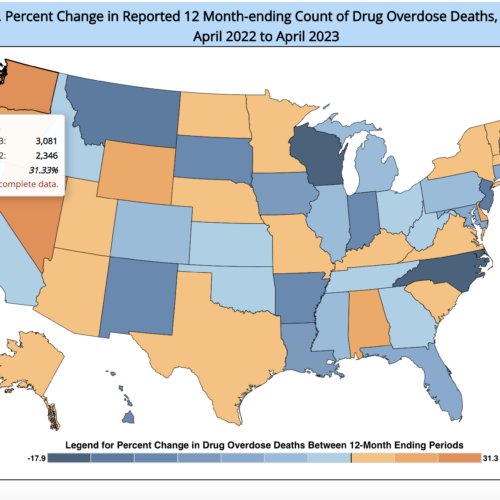
Federal funds to battle opioid addiction coming to rural western Washington hospitals
For people seeking medication-assisted treatment for substance use disorder in some rural Washington communities, there could soon be more options. Recent grant funding from the U.S. Department of Health and Human Services has been allocated to develop medication-assisted treatment (MAT) at rural clinics.
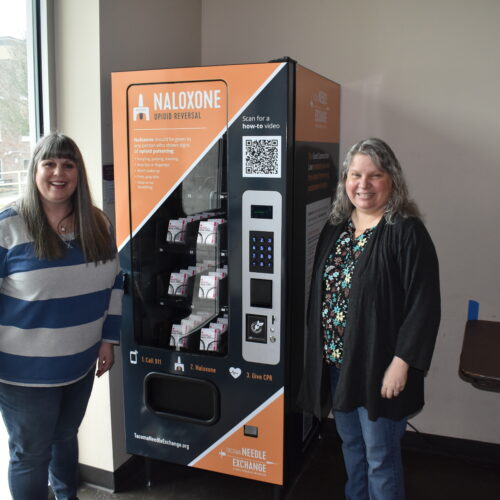
How Washington, Idaho are attempting to reduce increased opioid overdose deaths
In downtown Tacoma, Rachel Ahrens said she sees drug use and abuse frequently.
“I’ve personally seen somebody that was just slumped up against the door and looked to be like an overdose,” said Ahrens, who is the building administrator for First United Methodist Church. “I didn’t have Narcan at that time, so I wasn’t able to administer that. So I had to call 911, for them to help the individual.”
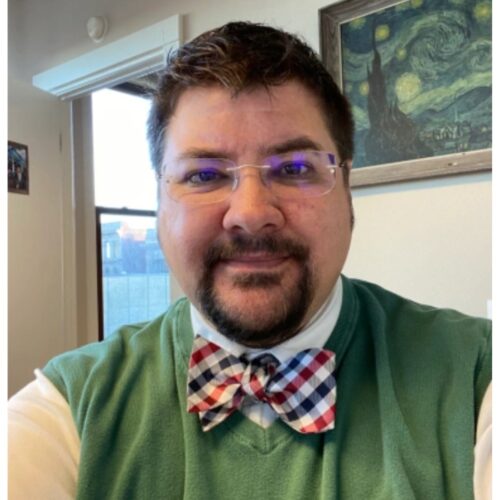
How Blue Mountain Heart To Heart Treats Drug Addiction In Eastern Washington
Everett Maroon Listen (Runtime 3:33) Read Like much of the nation, Benton and Franklin Counties are experiencing a dramatic increase in the number of people dying from overdoses and drug
















